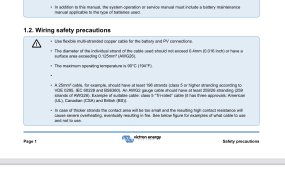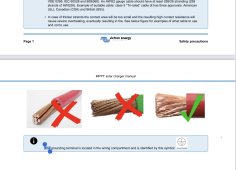vortextangent
New Member
- Joined
- Feb 28, 2022
- Messages
- 3
I'm looking to pull the trigger on an Amazon piecemeal Renogy system for my shed.
2 - 320W 24v Renogy panels $645 for both https://www.amazon.com/gp/product/B08D644VFN
1 - Renogy Rover 40A Charge controller $140 https://www.amazon.com/gp/product/B01MSYGZGI
1 - Sprance Solar combiner with lightning arrester $100 https://www.amazon.com/gp/product/B09NNCNZVG
2 - Renogy 12v 100AH AGM batteries $210 each ($420 total) https://www.amazon.com/gp/product/B075RFXHYK
1 - Giandel 1200W Inverter 24V ($210) https://www.amazon.com/gp/product/B07PQTMD6P
$~1500 total
It'll keep my tool batteries topped up and power a small home office (possibly a small window ac). Shed office area will be insulated.
It's a very large shed with a loft for wood storage maybe 24x24 and office area is maybe 8 x 24?
Is there any important component I should consider adding?
I'd like to have a 24v battery bank but 24v lithium is a bit too expensive for me and 12v seem to not want to be wired in series? later i'll probably build a battery bank but want to check viability of solar on the shed and gain some practical working solar knowledge before attempting that.
Edit:
Forgot to mention wires
I have a lot of spare MC from when I wired my house a few years ago that i'll probably use (unless solid wire is a big no-no?) but will need to get some MC4 connectors for the panel extension wires.
2 - 320W 24v Renogy panels $645 for both https://www.amazon.com/gp/product/B08D644VFN
1 - Renogy Rover 40A Charge controller $140 https://www.amazon.com/gp/product/B01MSYGZGI
1 - Sprance Solar combiner with lightning arrester $100 https://www.amazon.com/gp/product/B09NNCNZVG
2 - Renogy 12v 100AH AGM batteries $210 each ($420 total) https://www.amazon.com/gp/product/B075RFXHYK
1 - Giandel 1200W Inverter 24V ($210) https://www.amazon.com/gp/product/B07PQTMD6P
$~1500 total
It'll keep my tool batteries topped up and power a small home office (possibly a small window ac). Shed office area will be insulated.
It's a very large shed with a loft for wood storage maybe 24x24 and office area is maybe 8 x 24?
Is there any important component I should consider adding?
I'd like to have a 24v battery bank but 24v lithium is a bit too expensive for me and 12v seem to not want to be wired in series? later i'll probably build a battery bank but want to check viability of solar on the shed and gain some practical working solar knowledge before attempting that.
Edit:
Forgot to mention wires
I have a lot of spare MC from when I wired my house a few years ago that i'll probably use (unless solid wire is a big no-no?) but will need to get some MC4 connectors for the panel extension wires.
Last edited:





